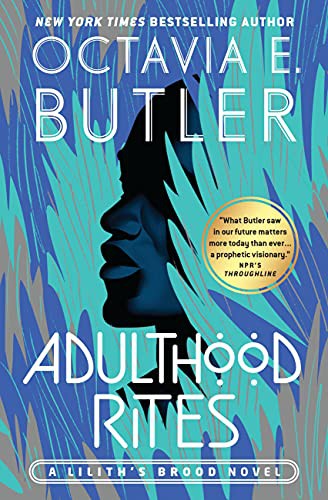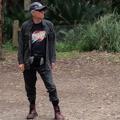AvonVilla reviewed Adulthood Rites by Octavia E. Butler
To boldly explore freaky new modes of reproduction, sex and death
4 stars
In typical Butler style, the second book in this series moves on to the next generation. Lilith, the human collaborator with the alien saviour-colonisers, fades into the background, making way for her half alien son Akin. He's not portrayed as a mythical Christ-figure, his motivations are too deeply biological and personal for that. But he is a potential saviour for the human holdouts who would rather die out than interbreed with the hegemonising Oankali.
There's a perfect balance here. The Oankali have rescued the tiny remnant of humanity which survived the nuclear holocaust, and they treat their new friends with love that goes all the way into the sexual realm and way beyond what we thought was possible with our limited capacity for fleshy pleasures. On the other hand they dictate that humanity can only survive as an interbred hybrid with themselves. Fuck with us and have half-alien babies, or …
In typical Butler style, the second book in this series moves on to the next generation. Lilith, the human collaborator with the alien saviour-colonisers, fades into the background, making way for her half alien son Akin. He's not portrayed as a mythical Christ-figure, his motivations are too deeply biological and personal for that. But he is a potential saviour for the human holdouts who would rather die out than interbreed with the hegemonising Oankali.
There's a perfect balance here. The Oankali have rescued the tiny remnant of humanity which survived the nuclear holocaust, and they treat their new friends with love that goes all the way into the sexual realm and way beyond what we thought was possible with our limited capacity for fleshy pleasures. On the other hand they dictate that humanity can only survive as an interbred hybrid with themselves. Fuck with us and have half-alien babies, or remain sterile and go extinct. Benevolence and dictatorship never co-existed with such intensity.
The rebellious humans would appear to be completely within their rights to resist, but the Oankali have determined with absolute certainty that they will only end up destroying themselves all over again, so there's no future for them. The humans are already murderous arseholes, kind of proving the point.
Akin knows that too, but he can't help himself. He wants to save humanity even if it's doomed to failure.
As usual with Butler, the moral and social dilemmas of her fiction are laced with passion and horror, and the result is a super intense portrayal of love, life, sex and death. There are no easy answers, no happy-ever-after, but the messy, ambiguous reality gives very satisfying HARD answers, and little bits of happiness along the way.
Another essential novel from a master of the genre.


